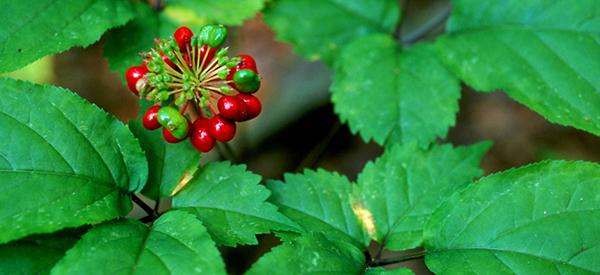
Ginseng
The name Ginseng does not refer to a single plant but rather to 11 distinct varieties, all of which are slow-growing, low to the ground, and have fleshy roots. These herbaceous perennial plants are members of the ivy family.
The two varieties that are most valued for their health-giving properties are American / Wild Ginseng (Panax quinquefolius) and Asian / Chinese / Korean Ginseng (Panax ginseng). Both have valuable, albeit different, active ingredients and wellness applications. Although Asian Ginseng root is considered the original ginseng with American Ginseng as its cousin.
For the purposes of this article, however, we will focus on American / Wild Ginseng (Panax quinquefolius).
The history of Ginseng
American Ginseng has formed part of traditional, herbal medicine in North America and China for many centuries. Native Americans collected and used both the roots and leaves to treat or alleviate a range of conditions. They also sold wild-harvested roots to traders from China and Hong Kong.
There are records of the export of this species of Panax from North America to China dating back to the 17th and 18th centuries. The American variety is seen as ‘cool’ by Chinese healers and the Asian plant as ‘hot’, so the two complement each other in terms of both offering a range of benefits.
Where this plant is found
Unsurprisingly, American Ginseng is native to North America and found in the central and eastern regions of the country and southeastern Canada. It is now grown commercially in both countries. Wild Ginseng, unfortunately, has been over-harvested in many areas and, as a result, has been declared either an endangered or threatened species in several states and much of Canada.
Equally predictably, Asian Ginseng hails from the mountains of East Asia (Outer Manchuria, the Korean Peninsula, and Northeast China).
Related: The Complete Map of Edible Plants: Find Out What You Have in Your Area! (Video)
How to identify Ginseng
This shade-loving plant is found growing in deciduous forests. It only reaches a height of 6 – 18 inches or 15 – 46 centimeters.
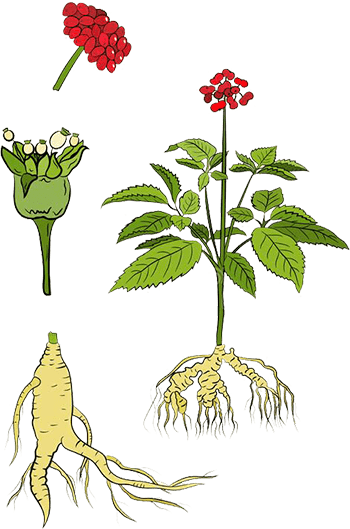
- Leaf: The light green leaves form at the top of relatively long stalks and have serrated edges. Each plant usually only bears three leaves each with 2 – 5 leaflets. The leaf arrangement forms an oval shape. The foliage turns yellow in fall.
- Flower: The fragrant flowers form in clusters of small yellow-green or greenish-white flowers. Some say that the fragrance is like that of lily of the valley.
- Root: The root is light in color, fleshy, and aromatic. As it ages it forks and reaches a length of 3 – 8 inches / 7 ½ – 20 ¼ centimeters and ¼ – 1 inch / ¾ – 2 ½ centimeters in width after five years of growth. It is only at this stage that roots should be harvested.
- Fruit: The fruit or berries are pea-sized and bright red when they are ripe. The color darkens as the fruit ages, and each berry usually contains two crinkled seeds.
It is far easier to identify American Ginseng when it is in fruit or wearing its fall colors. If you are ever unsure of the correctness of plant identification, don’t eat any part of the plant or – out of an abundance of caution – pick the plant material without wearing gloves.
How to Grow Ginseng
Growing Ginseng is a real challenge. Firstly, they require specific growing conditions and, secondly, take 5 to 10 years to fully mature, which is a long time to wait for a crop. These plants need:
- 75 – 90% shade
- Soil that remains moist but drains well
- Temperate temperatures (an average annual temperature of 50 Fahrenheit or 10 Celsius)
- Little or no competition for water or nutrients from other plants or weeds
- Neutral or alkaline soil (5.6 – 6 pH)
- Air circulation
- A slope or simulated slope.
Containers with effective drainage areas can be used to grow Ginseng indoors. Again, the plant must be kept out of the sun.
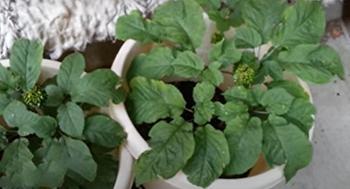
If you are sowing Ginseng seeds, they must be planted in fall or early winter and 1 ½ inches / 3 ¾ centimeters deep and 14 – 18 inches / 35 ½ – 45 ¾ centimeters apart. Press the soil down and then cover the ground with a thick layer of mulch (3 inches / 7 ½ centimeters).
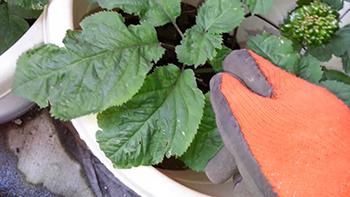
However, the seeds must be stratified first for 6 months to trigger germination. Even if correctly stratified, seeds take up to 18 months to germinate. If you are propagating with whole roots, they should be planted in early spring at a depth of 3 inches / 7 ½ centimeters.
You can purchase seedlings which reduces time and work. They are not inexpensive, though, for obvious reasons.
In terms of care, Ginseng plants must be kept moist, don’t require feeding, and don’t like interference. Keep an eye out, though, for signs of fungal diseases or pests such as cutworms and slugs.
Get Your Own Medicinal Seeds, Last 30 Packs Left
How to harvest this plant
There are four guidelines that govern the harvesting of Ginseng root:
- Only harvest from mature plants

- Only dig up the roots when the berries have turned dark red (usually in the fall)
- Dig carefully so you don’t damage or break the roots. Use a fork around the plant and 6 inches / 15 centimeters from it and then pry the roots loose
- Plant some of the ripe seeds to ensure the plants are sustainable.
The question then becomes, “How do I know the plant is mature enough?” The following may be helpful:
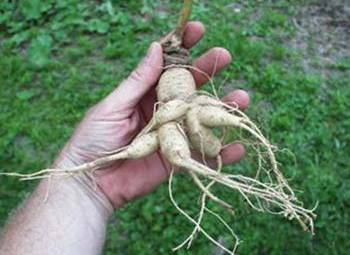
- Check the number of leaves: the more leaves, the more mature the plant. There should be a minimum of 4.
- Examine the root neck: the plant develops a stem scar for each year of growth. If there are 3 scars, the plant is 4 years old, and a 5-year-old Ginseng will have 4 scars. These can be seen by gently removing the top layer of soil around the base of the plant, counting the scars, and replacing the soil.
If you are foraging rather than harvesting from your own plants, keep in mind that there are federal and state laws that aim to prevent over-harvesting. Ensure that you know what they are before harvesting in the wild.
As with any foraged plants, do all you can to ensure the sustainability of the species and that there is enough available for others.
What Ginseng is good for & the natural remedies made from it
The primary active ingredients in American ginseng are ginsenosides/saponins and polysaccharides, and they are thought to lie behind the plant’s health-giving properties. Over the centuries, Panax quinquefolius has been used to:
- Reduce inflammation
- Protect against oxidative stress

- Improve erectile dysfunction by enhancing blood flow
- Boost memory
- Lift mood and reduce anxiety
- Boost the immune system
- Reduce the risk of certain cancers
- Combat fatigue and improve energy levels
- Lower blood sugar levels.
It should be noted that, while there is substantial anecdotal evidence to support most of the above, there is still little or no conclusive clinical evidence.
Related: Just Like Xanax, The Anxiety Relieving Plant That Grows In Your Backyard (Video)
What parts of the plant are used in remedies?
The leaves are used but the primary plant material is the root.
Ginseng is produced in a powdered form, as an oil, and as loose powder. The fresh or dried root can be eaten, steeped to make tea, or added to food. It can also be consumed as a powder, capsule, or oil.
A DIY Ginseng recipe
The most popular – and beneficial – way to obtain the benefits of Ginseng is by making a decoction or tea, preferably using fresh root. In addition to good for you, this beverage is easy to make.
Ingredients
- 1 tablespoon of fresh Ginseng root
- 1 cup filtered water
Method
- Use a sharp knife or a vegetable peeler to produce the thinnest shavings/slices possible

- Boil the filtered water and let it cool for 1 – 2 minutes (using boiling water will destroy some of the active ingredients)

- Place the slices into a tea ball or directly into a suitable container and pour the hot water over the Ginseng

- Leave the liquid steeping for 5 minutes or longer, depending on how strong you like your tea
- Remove the tea ball/strain the liquid into a cup.

You can add honey to taste if you wish to, but don’t use milk of any kind or artificial sweeteners. For those who prefer less sweetness, lemon slices or juice can be added.
Ginseng can also be combined with other teas such as Green Tea or fruit teas. Finally, the shavings can be eaten for added benefit.
If you are not able to harvest fresh root yourself, you can purchase it from reputable online stores. The whole and sliced root are often available.
Dosage
As with so many plant extracts and herbal remedies, there is not a great deal of clinical data in terms of dose for American Ginseng. The exception is a product dispensed to ease colds and flu that contains extract has a dose of 200 – 400 mg twice daily.
You are urged not to take more or less of any remedy than is recommended either by your healthcare practitioner or the product’s manufacturer.
Related: 1 Cup Before Bed Shrinks Belly Fat All Night (Video)
How to preserve this plant
You need to soak the roots in cool water until the soil around them has loosened. Then, rinse them under running water to gently remove any remaining debris. Don’t scrub them because this damages the surface.
Drying is the best way to preserve roots. The first option is air drying: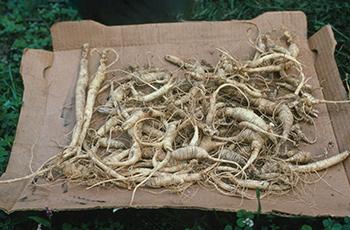
- Place the roots in a single layer, and not touching each other, on a wooden rack or some other surface that will allow air to circulate
- Leave the roots in a well-ventilated area
At no stage should the roots be placed on a metal surface. The main risk with this method is that if the drying takes too long, mold can develop before the process is complete. These roots will have to be thrown away.
You can also dry the plant material in the oven. However, drying the roots too fast will result in the loss of potency.
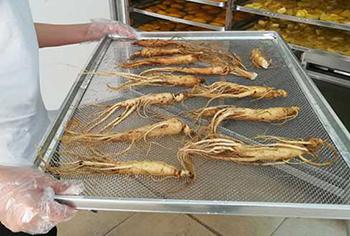
Whether you use air or oven drying, temperatures should be kept between 70 and 100 Fahrenheit / 21 and 40 Celsius. It’s also important to turn the roots every couple of days. With the right conditions, roots will take 7 – 16 days to dry fully although large, thick ones may take up to 6 weeks. If the roots snap in half easily and are white inside, they are dry.
Once thoroughly dry the roots should be stored in paper bags or cardboard boxes to allow air to circulate. Don’t use plastic as condensation may form and lead to mold formation.
What plants resemble Ginseng?
There are only two true Ginsengs: American and Asian. Several other plants that carry the name Ginseng are not members of the Panax plant family at all: Siberian Ginseng (Eleutherococcus senticosus), Indian Ginseng (Withania somnifera) or Ashwagandha, and Brazilian Ginseng (Hebanthe eriantha) or Suma. Interestingly, while they don’t have the same active ingredients, all these plants offer health benefits of some sort.
However, this can not be said of a look-alike plant that is toxic. The table below should help to differentiate the two.
| Feature | American GinsengPanax quinquefolius | Virginia CreeperParthenocissus quinquefolia |
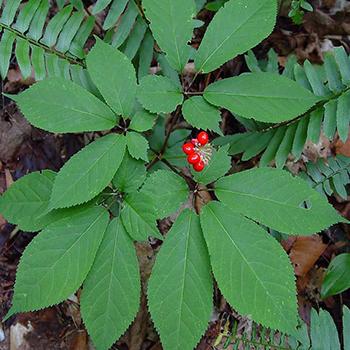 |
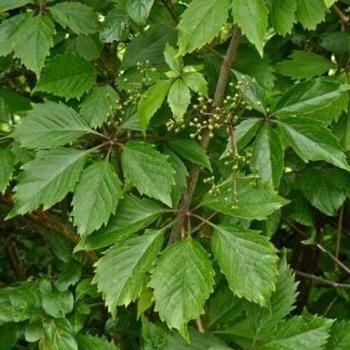 | |
| Growth habit | Low to the ground; reaches a height of 6 – 18 inches or 15 – 46 centimeters | A climbing vine or creeper that can reach a length of 50 feet / 15 meters; grows along the ground if there’s nothing vertical to cling to |
| Root | Thick, fleshy, light in color, and aromatic; forks as it ages; small rootlets from main roots | The extensive underground system of rhizomes with horizontal roots |
| Leaves | Relatively long stalks; serrated edge around entire leaf; leaf arrangement forms an oval shape; foliage turns yellow in fall | Leaves grow singly; coarsely serrated but none on the base of the leaflet; leaves broadest in the center; foliage turns brilliant red in fall |
| Flowers | Small, fragrant flowers form in clusters; yellow-green or greenish-white | Flowers form in small clusters; greenish in color |
| Fruit | Pea-sized; bright red when they are ripe and darken as the fruit ages | Dark blue or blackberries; highly toxic when eaten |
If you are unsure about the accuracy of the identification, do not pick or harvest from a plant!
Warning and cautions
While the use of American Ginseng is safe for most people, there are certain individuals who should avoid it or do so at least until their healthcare practitioner gives them the go-ahead to use it:
- Pregnant and breastfeeding women
- Children
- Patients suffering from hormone-sensitive cancers such as breast or uterine cancer
- Individuals who suffer from insomnia
- People taking heart medication
- Schizophrenic patients
- People taking blood-thinning medications
- Patients with impaired kidney and liver function
- Diabetics on medication
- Patients taking MAOI antidepressant medications
- Individuals scheduled for surgery.
Evidence does seem to suggest that using Ginseng for extended periods can diminish its effectiveness. For this reason, it’s a good idea to give your body a rest for 1 – 2 weeks after taking Ginseng for 2 to 4 weeks.
The side effects reported by some people include gastric upset, insomnia, headaches, rapid heartbeat, changes in blood pressure, and significant skin reactions. Some women reported vaginal bleeding and swollen breasts.
As with any remedy – natural or otherwise – always check with your healthcare provider before you start to use Ginseng in any form.
You may also like:
Homemade Adaptogenic Bars With Ashwagandha
Foods and Herbs to Avoid When You Have Diabetes
How to Make an Immunity Boosting Shot with Celery, Spinach, Ginger, Lemon, and Manuka Honey








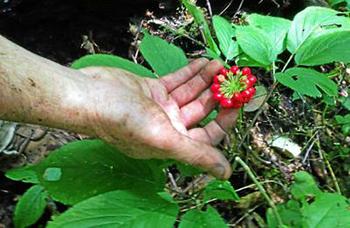
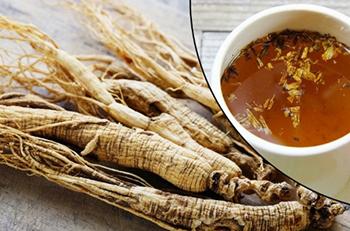
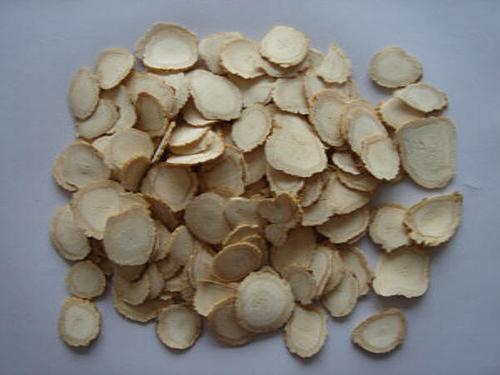
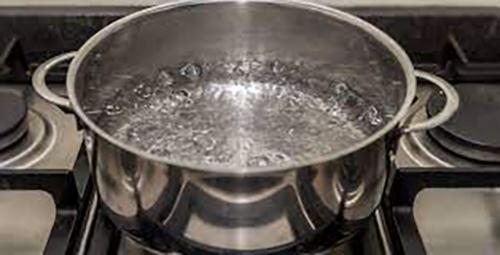
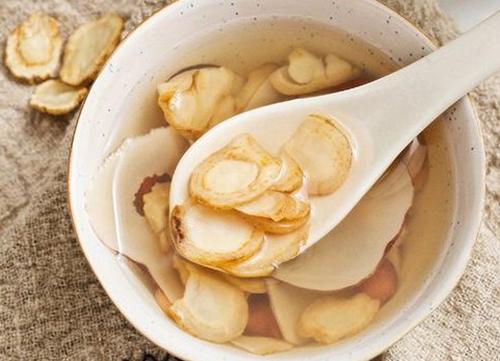
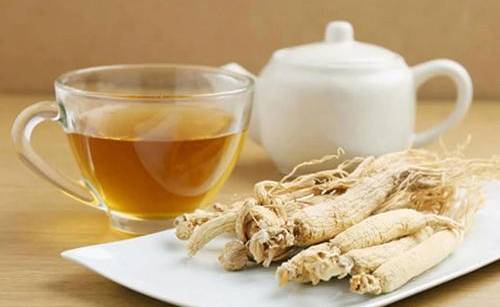

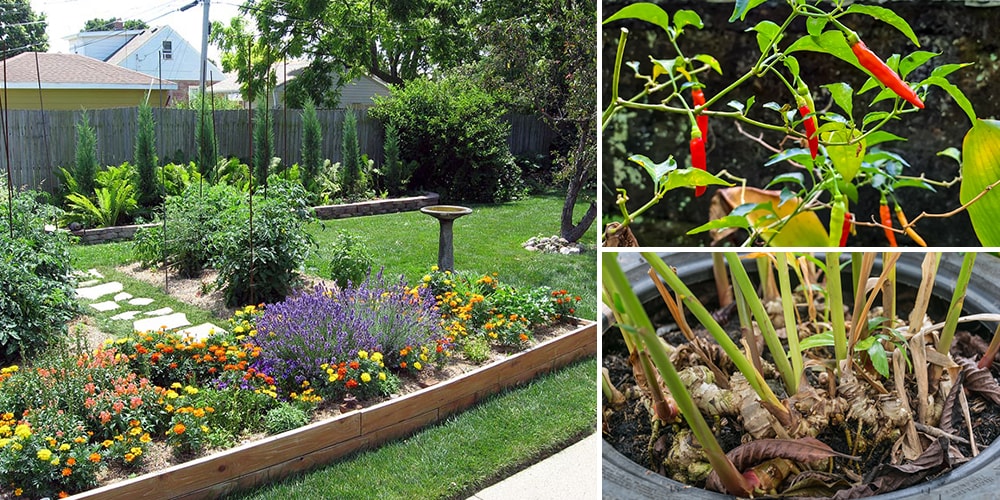
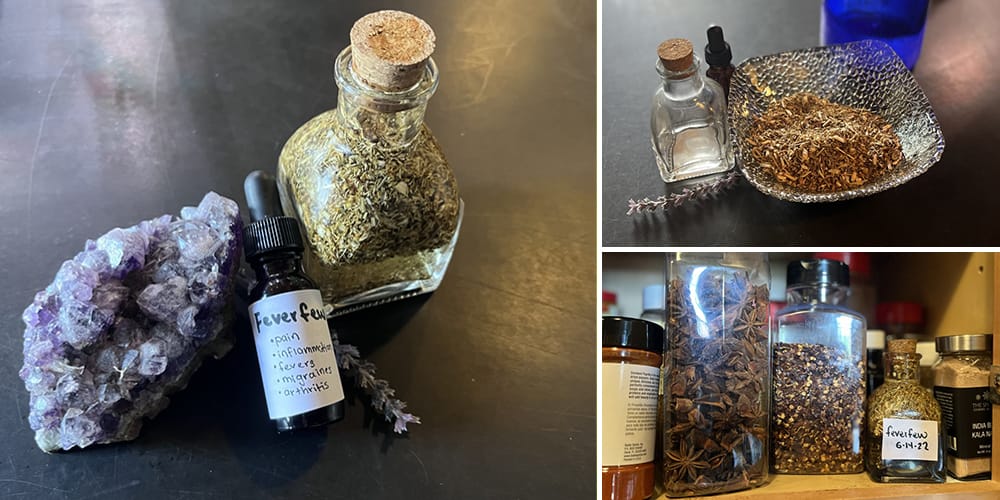
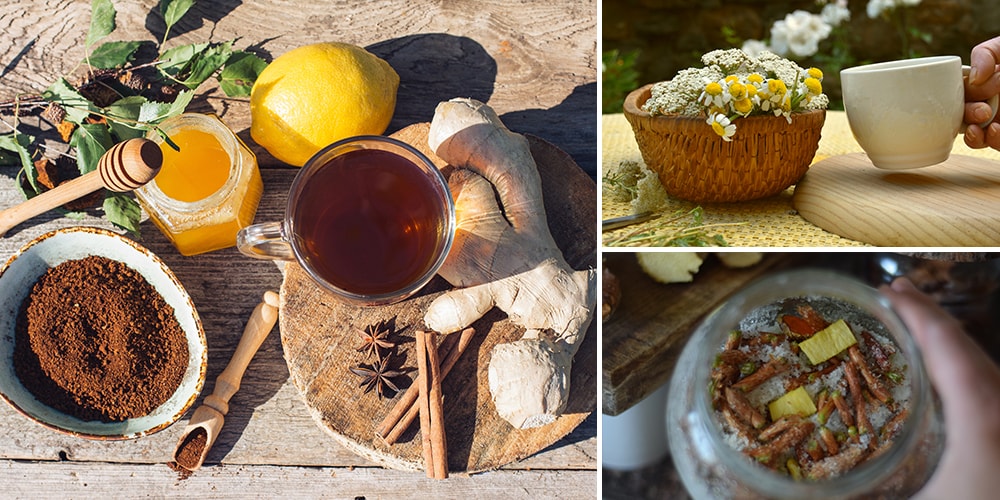
My blood sugar levels have been acting up lately so this recipe’s a blessing!
I love this page. Thank you.
Hi Fabiola,
Thank you so much for your comment.
I am glad to hear that you love our website.
God bless!
Thank you for all the information you share. You are a blessing
Hi Saralee,
Thank you for your feedback.
We really appreciate it.
God bless!